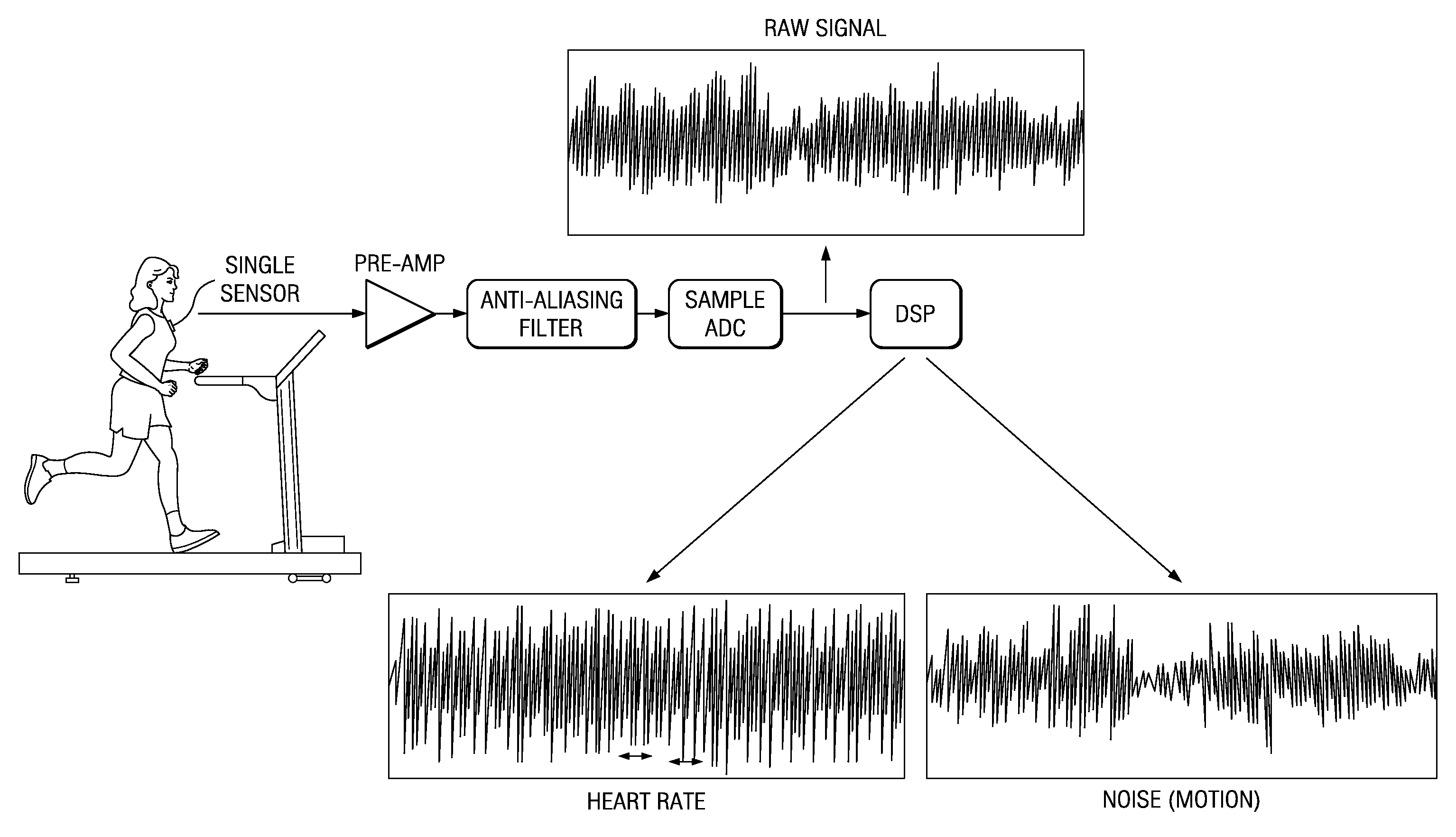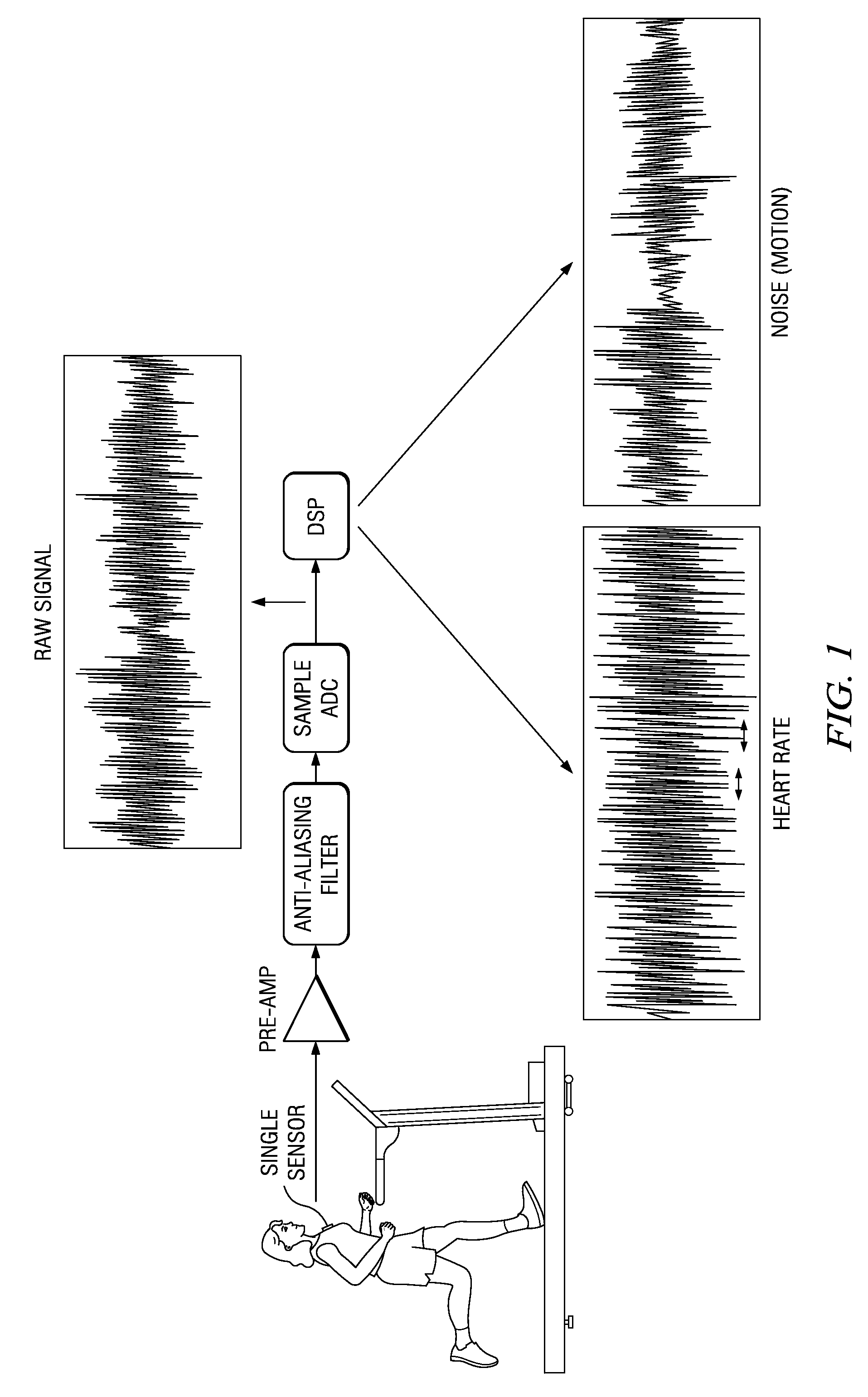Motion/activity, heart-rate and respiration from a single chest-worn sensor, circuits, devices, processes and systems
a technology of heart-rate and respiration, which is applied in the field of motion/activity, heart-rate and respiration from a single chest-worn sensor, circuits, devices, processes and systems, can solve the problems of cumbersome equipment, and inconvenient long-term and ambulatory monitoring
- Summary
- Abstract
- Description
- Claims
- Application Information
AI Technical Summary
Benefits of technology
Problems solved by technology
Method used
Image
Examples
embodiment 2
[0100]FIGS. 7A-7C show signal plots for an ECG filtering The plots have different time scales and walking conditions. Raw ECG signal from the ECG electrodes in FIG. 2 and a concurrent filtered ECG signal waveform, by applying steps 110-140 separately to the ECG signal, are depicted for a subject walking on a treadmill.
[0101]In another embodiment, satisfactory S1-S2 heart signals were extracted from raw motion-affected accelerometer Z-axis data by LPF (low pass filtering) with corner at 100 Hz and then Savitzky-Golay filtering at 20th order, followed by subtraction of the S-G signal from the LPF signal, and followed further by signal enhancement. It appears that polynomial filtering of motion-affected LPF accelerometer signals, using polynomial filtering on the order in a range of approximately 20th order or higher order to at least over 30th order, is satisfactory for obtaining heart signals as a residue by subtraction of the polynomial filtering output from the LPF signals. Using ...
embodiment 600
[0174]FIG. 24 shows an implementation of a wired system embodiment 600 for a respiration and cardiac monitoring system. An accelerometer 510 is strapped to the chest of the person being monitored. An axis sensor signal is coupled to a data acquisition signal processing unit 520 having a stream data interface and an associated data storage unit 530 for the signal stream and for instructions and parameters. The signal processing unit 530 supplies process monitoring data to one or more display units 550.i, each having a respective data storage unit 560.i. A first form of display 550.1 shows the heart sound signal and / or heart rate. A second form of display 550.2 shows the body motion signal. A third form of display 550.3 shows the respiration signal and / or respiration rate and / or or respiration depth (how deeply the person is breathing) and / or other respiration parameters. Various parameters for respiration are obtained from the respiration waveforms by finding various values on the wa...
PUM
 Login to View More
Login to View More Abstract
Description
Claims
Application Information
 Login to View More
Login to View More - R&D
- Intellectual Property
- Life Sciences
- Materials
- Tech Scout
- Unparalleled Data Quality
- Higher Quality Content
- 60% Fewer Hallucinations
Browse by: Latest US Patents, China's latest patents, Technical Efficacy Thesaurus, Application Domain, Technology Topic, Popular Technical Reports.
© 2025 PatSnap. All rights reserved.Legal|Privacy policy|Modern Slavery Act Transparency Statement|Sitemap|About US| Contact US: help@patsnap.com



